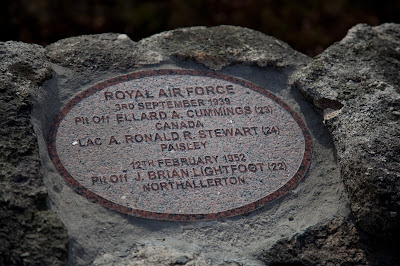Easter Aquhorthies Stone Circle - By Duncan Harley
The ancient standing stones at Easter Aquhorthies, on the outskirts of
Inverurie, appear to have been chosen specifically for their colour.
A mixture of red jasper and grey granite uprights sit alongside a humongous recumbent boulder quarried from the foot of nearby Bennachie.
Described by Historic Environment Scotland as “An intact, recumbent stone circle consisting of eleven erect stones, the recumbent stone and three stones set almost at right angles to it, all set in a low ridge of small boulders” Easter Aquhorthies attracts a steady stream of visitors keen to touch the monoliths. Seemingly red jasper has spiritual qualities and, as a result, portions of some stones have been rubbed smooth over the centuries.
This ancient Neolithic circle is, even nowadays, relatively complete and today attracts what unkind locals describe as ‘folk intent on watching the mid-summer dawn while performing fertility rights and Mother Earth ceremonies’.
The circa four-thousand-year-old site is a nowadays a popular backdrop for wedding photographers and on more than a few occasions, loving couples have exchanged wedding vows alongside the ancient Moon Stone.
Indeed, one bride, a local postie, recently arrived at the ancient altar in a red-liveried postal delivery van to make her heavenly vows under the watchful eye of the ancient gods.
The name Easter Aquorthies probably derives from the Gaelic language but opinions differ as to the exact meaning. Some believe that it means field of prayer while others contend that it refers to a ‘field of the pillar stone’ from the Gaelic 'achadh choirthe'. Either way, the place certainly reeks of old-time religious and new-age metaphysical significance.
More in The Little History of Aberdeenshire - by Duncan Harley and available from Amazon @ £12
A mixture of red jasper and grey granite uprights sit alongside a humongous recumbent boulder quarried from the foot of nearby Bennachie.
Described by Historic Environment Scotland as “An intact, recumbent stone circle consisting of eleven erect stones, the recumbent stone and three stones set almost at right angles to it, all set in a low ridge of small boulders” Easter Aquhorthies attracts a steady stream of visitors keen to touch the monoliths. Seemingly red jasper has spiritual qualities and, as a result, portions of some stones have been rubbed smooth over the centuries.
This ancient Neolithic circle is, even nowadays, relatively complete and today attracts what unkind locals describe as ‘folk intent on watching the mid-summer dawn while performing fertility rights and Mother Earth ceremonies’.
The circa four-thousand-year-old site is a nowadays a popular backdrop for wedding photographers and on more than a few occasions, loving couples have exchanged wedding vows alongside the ancient Moon Stone.
Indeed, one bride, a local postie, recently arrived at the ancient altar in a red-liveried postal delivery van to make her heavenly vows under the watchful eye of the ancient gods.
The name Easter Aquorthies probably derives from the Gaelic language but opinions differ as to the exact meaning. Some believe that it means field of prayer while others contend that it refers to a ‘field of the pillar stone’ from the Gaelic 'achadh choirthe'. Either way, the place certainly reeks of old-time religious and new-age metaphysical significance.
More in The Little History of Aberdeenshire - by Duncan Harley and available from Amazon @ £12











Comments
Post a Comment